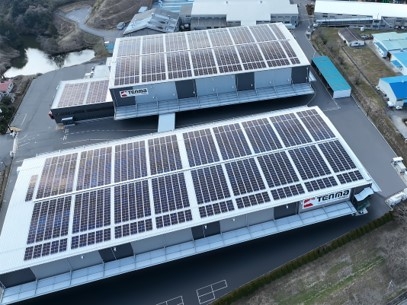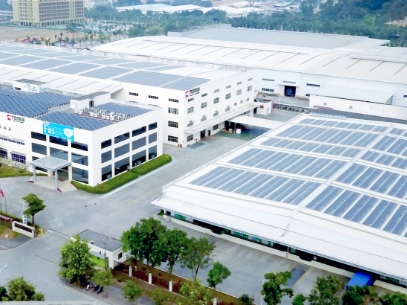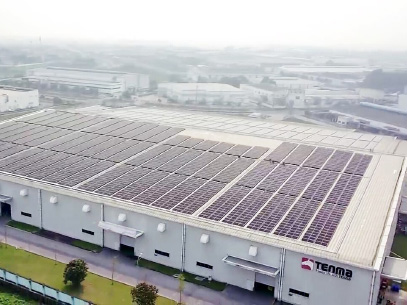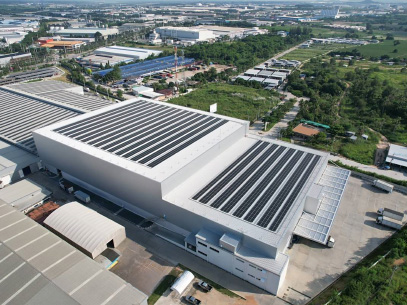Information Disclosure Based on TCFD Recommendations
- Home
- Sustainability
- Information Disclosure Based on TCFD Recommendations
first
In May 2023, the Tenma Group announced its endorsement of the TCFD (Task Force on Climate-related Financial Disclosures) recommendations, and based on the TCFD recommendations, established governance, strategy, risk management, and indicators. We are working to disclose information related to four items:The Tenma Group has set “mitigation and adaptation to climate change” as one of its materialities (important issues), and is striving to strengthen its response to climate change. To achieve both, we will strategically promote sustainability activities throughout the Group.

*TCFD (Task Force on Climate-related Financial Disclosures)
It was established by the Financial Stability Board (FSB) in 2015 at the request of the G20.Companies are encouraged to disclose information on "governance," "strategy," "risk management," and "metrics and targets" related to climate change-related risks and opportunities. (TCFD website:https://www.fsb-tcfd.org/)
Governance
【Oversight system of the Board of Directors】
The Tenma Group recognizes that sustainability issues, including climate change, are important management issues, and in order to address these issues, we have established the Sustainability Promotion Office and the Sustainability Promotion Committee as an organization that reports directly to the President and Representative Director.
The Sustainability Promotion Office works with related departments to lead the calculation of greenhouse gas emissions and climate change scenario analysis. Formulation and progress management of action policies for identified and identified materiality, deliberations on matters related to information disclosure related to sustainability, reporting to the Board of Directors, and reporting to the Board of Directors on the activities and progress of this committee We have a system to reportIn addition, in order to discuss specific initiatives for materiality and promote sustainability activities, working groups are set up directly under the committee as necessary, and the entire group works together.
The Board of Directors receives reports and proposals from the Sustainability Promotion Committee as appropriate, discusses and makes resolutions, and oversees overall initiatives related to sustainability issues, including climate change.

【Role of management】
The President and Representative Director serves as chairman of the Board of Directors, directs and supervises sustainable management, including formulating management plans and materiality, including responses to climate change, and has the authority to appoint the chairman of the Sustainability Promotion Committee. and has ultimate responsibility for climate-related issues.
strategy
Scenario analysis is conducted on climate-related risks and opportunities to assess the resilience of Tenma Group's business strategies.
【Scenario analysis process】
We use the following process to identify and assess climate-related risks and opportunities, and consider countermeasures.
- Identification of risks and opportunities
- Extract a wide range of climate-related risks and opportunities, and identify the most important risks and opportunities based on the magnitude of the business impact of the risks and opportunities.
- Scenario creation
- Obtain objective future information on parameters related to risk/opportunity items and create scenarios
- Measuring financial impact
- Measure the financial impact in fiscal 2030 of highly material risks and opportunities based on the scenarios created
- Examination of countermeasures
- Based on the measured financial impact, consider countermeasures aimed at reducing risks and seizing opportunities
[Scenario overview]
Based on reports based on scientific knowledge such as the IEA and international trends such as the Paris Agreement, we have selected a 1.5°C scenario for transitioning to a low-carbon society and a 4°C scenario for advancing global warming.
| scenario | Overview | Main References Referenced |
|---|---|---|
| 1.5 ℃ scenario |
In order to achieve net zero greenhouse gas emissions by 2050, decarbonization policies such as carbon taxes, emissions trading, and plastic regulations will be strengthened. Along with this, it is expected that there will be requests for efforts to reduce greenhouse gas emissions, a shift from virgin plastics to recycled and bioplastics, and an increase in demand for low-carbon products. Since the temperature rise will be suppressed, it is assumed that the physical impact will not be large. |
|
| 4 ℃ scenario |
Reliance on fossil fuels has fueled economic development, inadequate climate change policies, and slow progress in decarbonization technologies. On the other hand, as the temperature rises, the need for air conditioning equipment and measures against heatstroke will increase, and it is expected that weather disasters such as floods will become more severe and physical damage will expand. |
|
[Important risks/opportunities, financial impacts and countermeasures identified]
| financial impact | Small: Less than 1 million yen | Medium: 1 million yen to less than 10 billion yen | Large: 10 billion yen or more |
| Timeline | Short term: 0 to less than 3 years | Medium term: 3 to less than 10 years | Long term: 10-30 years |
1.5℃ scenario
| Sort | Climate change driver |
Assumption | Impact on business (potential financial impact) |
Risk/Opportunity | Timeline | Finance イ ン パ ク ト |
counter-measure |
|---|---|---|---|---|---|---|---|
| policy· Laws and regulations |
Introduction of carbon tax/emissions trading system | Creates a burden of carbon emissions | Increase in procurement costs due to pass-on of carbon tax, etc. (Increase in procurement costs) | risk | medium to long | L |
|
| Increase in logistics costs due to pass-on of carbon tax, etc. (Increase in logistics costs) | risk | medium to long | 中 |
|
|||
| Scope 1,2 and 1,2 bear the burden of carbon emissions (increase in costs such as carbon taxes related to Scope XNUMX and XNUMX) | risk | medium to long | L |
|
|||
| Scope 1,2 and 1,2 reduction will reduce future carbon emission burden (Cost reduction such as carbon tax related to Scope XNUMX and XNUMX) | opportunity | medium to long | 中 | ||||
| Introduction of plastic regulations | Burden of virgin plastic tax will be incurred | The price of petrochemical-derived plastics, a major raw material, will rise (increase in procurement costs) | risk | medium to long | L |
|
|
| Development of low-carbon products enables the use of cheaper raw materials than petrochemical-derived plastics (reduction of procurement costs) | opportunity | medium to long | L | ||||
| Use rate of recycled plastics and bioplastics is set | Necessity to use a certain percentage of recycled plastics and bioplastics (increase in procurement costs) | risk | medium to long | L | |||
| Market | material price increase | Prices will rise as demand for recycled plastics and bioplastics increases due to the development of a low-carbon, recycling-oriented society. | The price of recycled plastics and bioplastics, which are raw materials, will rise (increase in procurement costs) | risk | medium to long | L |
|
| Increasing customer awareness of low-carbon and recycling-oriented societies | Customers demand the use of low-carbon energy and the achievement of carbon neutrality | It will be necessary to introduce low-carbon energy and achieve carbon neutrality (increase in costs for measures aimed at carbon neutrality) | risk | medium to long | 中 |
|
|
| Increasing customer preference for low-carbon products | Loss of sales opportunities for products using petrochemical-derived plastics due to an increase in the number of customers who prefer low-carbon products (decrease in sales of petrochemical-derived plastic products) | risk | medium to long | L |
|
||
| Sales opportunities for low-carbon products using recycled plastics and bioplastics will increase (increase in sales of low-carbon products) | opportunity | medium to long | L | ||||
| Growing demand for 3R initiatives for plastic products | Costs related to the plastic circulation scheme will increase (increase in collection and recycling costs) | risk | medium to long | L |
|
||
| Building a plastic recycling scheme will increase sales opportunities for recycled products (increase sales of recycled products). | opportunity | medium to long | L | ||||
| retail electricity price increase |
Retail electricity prices will rise as electric power companies shift to power generation based on low-carbon energy (renewable energy, CCS, etc.) | The price of electricity purchased by suppliers rises (increase in procurement costs) | risk | medium to long | L |
|
|
| Electricity bills purchased by our company rise (increase in electricity costs) | risk | medium to long | 中 |
|
|||
| Reduction in electricity bills through the introduction of renewable energy and energy-saving equipment (decrease in electricity costs) | opportunity | medium to long | 中 |
4℃ scenario
| Sort | Climate change driver |
Assumption | Impact on business (potential financial impact) |
Risk/Opportunity | Timeline | Finance イ ン パ ク ト |
counter-measure |
|---|---|---|---|---|---|---|---|
| physical (acute) |
Intensification of weather disasters (floods, heavy rains, typhoons, etc.) | Weather disaster disrupts supply chain | Delivery of materials and parts is delayed due to suppliers being affected by weather disasters (losses due to suspension of operations) | risk | short to long | Small |
|
| Due to weather disasters, distribution networks are cut off and shipments are suspended (decrease in sales due to shipment suspension) | risk | short to long | 中 |
|
|||
| Our base is damaged by a weather disaster | Damage to inventory assets and fixed assets due to damage from weather disasters (disaster loss of inventory assets and fixed assets) | risk | short to long | L |
|
||
| Suspension of operations due to damage from weather disasters (loss due to suspension of operations) | risk | short to long | 中 | ||||
| Customers are affected by weather disasters | Suspension of operations due to delay or suspension of delivery of our products due to weather disasters at our delivery destinations (losses due to suspension of operations) | risk | short to long | 中 |
|
||
| Importance of BCP increases due to intensification of weather disasters | BCP measures need to be strengthened and reviewed (increase in BCP measures costs) | risk | short to long | 中 |
|
||
| physical (chronic) |
average temperature rise | Increased need for air conditioning equipment to cope with rising temperatures | Increase in investment in air-conditioning equipment and costs due to air-conditioning operation at our bases (increase in air-conditioning operation costs and capital investment costs) | risk | short to long | 中 |
|
| Sales opportunities related to air conditioners will increase (Sales increase due to increased sales opportunities) | opportunity | medium to long | 中 |
|
|||
| Increased risk of heat stroke, etc. | Increased costs for heat stroke measures in outdoor work (Increase in heat stroke measures costs) | risk | short to long | Small |
|
||
| Warmer temperatures will increase tropical infectious diseases | Suspension of operations due to epidemic of infectious disease (loss due to suspension of operations) | risk | medium to long | L |
|
[Results of scenario analysis]
As for the impact on business under the 1.5°C scenario, efforts aimed at achieving carbon neutrality will progress, and policies aimed at decarbonization such as carbon taxes, emissions trading, and plastic regulations will be strengthened. While operating costs such as electricity are expected to increase, sales opportunities for eco-friendly low-carbon products are expected to increase.
As for the impact on business in the 4°C scenario, we anticipate an increase in investment in air-conditioning equipment, etc. to cope with rising temperatures and costs related to heat stroke countermeasures.In addition, there are concerns that operations will be suspended due to damage to the Group's business sites and disruption of the supply chain due to intensifying weather disasters.
The results of the scenario analysis will be reflected in the Tenma Group's long-term vision and medium-term management plan, and by implementing countermeasures and monitoring progress, we will build resilient strategies.
Risk management
[Process to identify, assess and manage climate-related risks]
The Sustainability Promotion Office works with related departments to identify a wide range of climate-related risks and opportunities, identify and evaluate important risks and opportunities based on their impact on business, and formulate countermeasures. We are considering.
The results of scenario analysis and the progress of countermeasures for risks and opportunities are regularly reported to the Sustainability Promotion Committee and the Board of Directors.
[Integration status of climate-related risk management and company-wide risk management]
The Tenma Group will develop and operate a group-wide risk management system to ensure the completeness of risks, as well as identify important risks and implement risk mitigation measures to control risks for the entire group. For this purpose, we have established the Risk Management Committee, which is chaired by the Chief Risk Management Officer and whose secretariat is the Internal Control Office of the General Affairs Department.
Risks identified through scenario analysis are reported and made recommendations to the Risk Management Committee as necessary to integrate climate-related risks into company-wide risk management.
Metrics and targets
[Metrics and targets related to climate change risks and opportunities]
Tenma Group has identified the mitigation of and adaptation to climate change as one of its Materialities (material issues) and has specified Scope 1 and Scope 2 emissions as metrics for the measurement and management of climate-related risks and opportunities.
In order to achieve carbon neutrality by 2050, the medium-term targets of Tenma Group have been set to reduce greenhouse gas (GHG) emissions (Scope 1+2) by 30% by fiscal year 2030 compared to fiscal year 2019, and to reduce GHG emissions intensity (Scope 1+2) divided by net sales) by 43% by fiscal year 2030 compared to fiscal year 2019.
In addition, based on the Japanese government's policy of aiming to reduce GHG emissions by 46% by fiscal year 2030 compared to fiscal year 2013 and further striving to achieve a reduction of 50%, we set the unconsolidated medium-term target to reduce GHG emissions (Scope 1+2) by 60% by fiscal year 2030 compared to fiscal year 2013.
In order to achieve the medium-term targets, Tenma Group will work to improve energy efficiency by introducing energy-saving equipment, utilizing renewable energy, and establishing a highly efficient production system.
Medium-term targets for reducing GHG emissions
| Metric | Range | Base year | Target year | Target | Results in 2023 |
|---|---|---|---|---|---|
| GHG emissions (Scope 1+2) reduction rate | Linking | 2019 | 2030 | ▲30% | ▲21% |
| non-consolidated | 2013 | 2030 | ▲60% | ▲57% | |
| GHG emissions intensity* Reduction rate | Linking | 2019 | 2030 | ▲43% | ▲27% |
*GHG emissions intensity: GHG emissions (Scope 1+2) divided by net sales
[Actual emissions Scope 1,Scope 2 and Scope 3]
Period covered: From April to March next year for unconsolidated values and from January to December for consolidated subsidiaries
(Linking)(t-CO2)
| 2022 | 2023 | |
|---|---|---|
| Scope1※ | 2,397.8 | 1,924.1 |
| Scope2※ | 99,180.2 | 84,207.2 |
| Scope1+2 | 101,578.1 | 86,131.3 |
| GHG emissions intensity | 1.00 | 0.93 |
(non-consolidated)(t-CO2)
| 2022 | 2023 | |
|---|---|---|
| Scope1 | 909.2 | 779.2 |
| Scope2 | 11,084.6 | 10,082.7 |
| Scope1+2 | 11,993.9 | 10,861.9 |
| Scope3※ | - | 138,653.3 |
*Scope 1: Direct greenhouse gas emissions
*Scope 2: Indirect greenhouse gas emissions
*Scope 3: Other indirect greenhouse gas emissions
Status of measures for reducing GHG emissions
To reduce GHG emissions, Tenma Group is promoting energy-saving measures that include switching to electrical injection molding machines, shifting to LED lighting, and upgrading air-conditioning systems.
In addition to investing in the installation of solar power generation facilities, we are also working to reduce GHG emissions by utilizing renewable energy through the introduction of solar power generation facilities based on on-site Power Purchase Agreements (PPA).
We will continue striving to expand the use of renewable energy.
[Solar power generation facilities on the roofs of our production bases]




